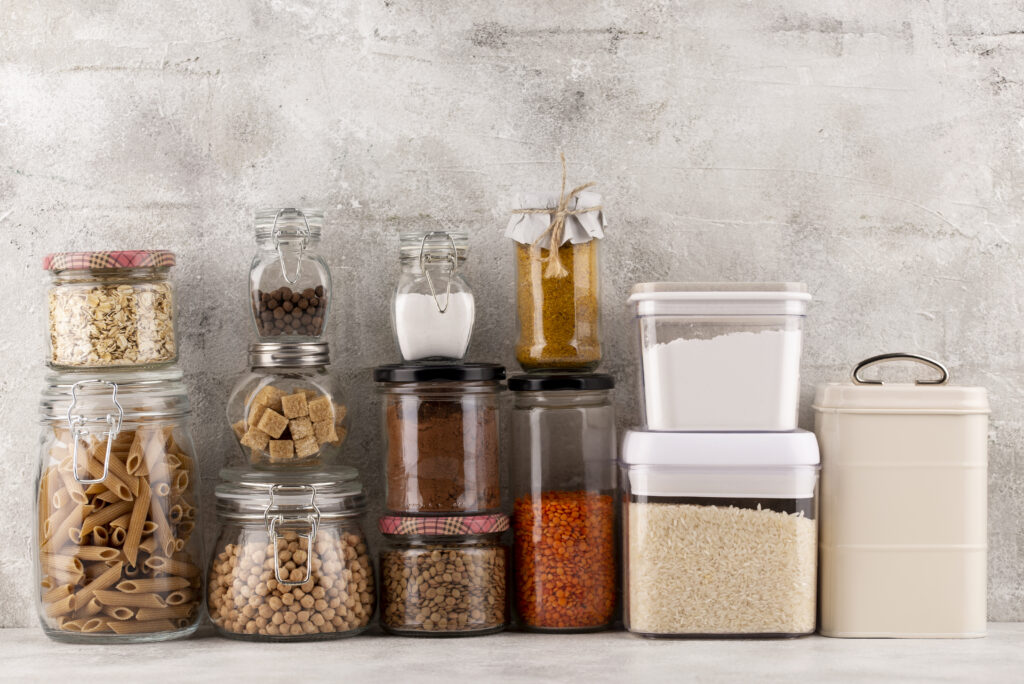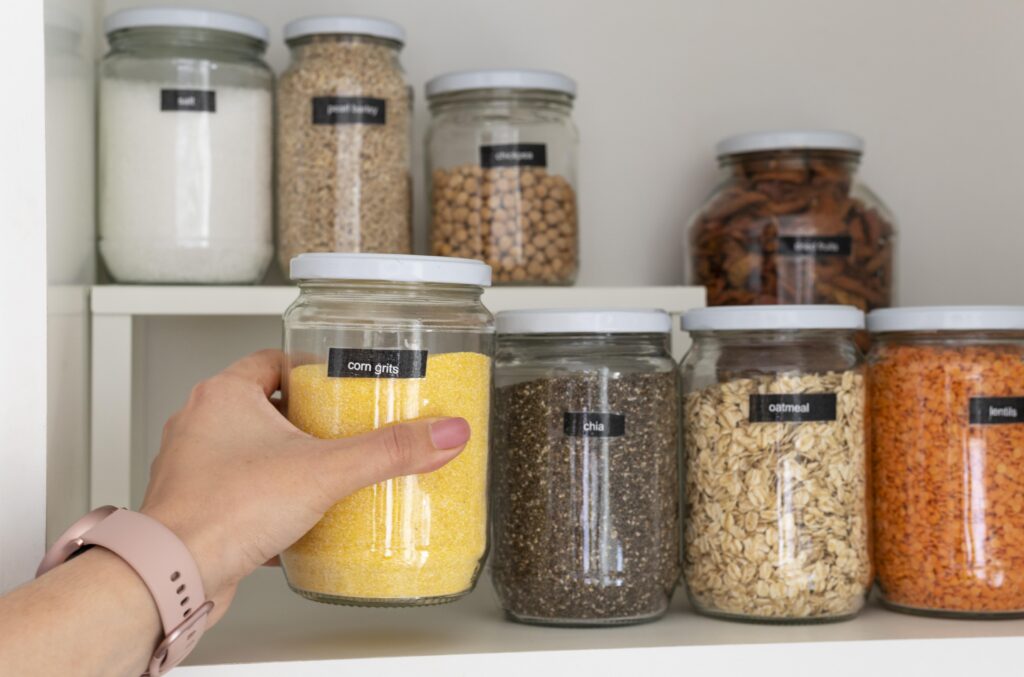Maximizing the freshness of your food is essential to reduce waste and ensure you’re consuming safe and delicious meals. Sometimes, it’s easier to organize but difficult to maintain as it is. My mother cannot tolerate if I move a single item to another place. But these tips will make it easier to organize as well as maintain. Here are some food storage tips to help you achieve this:

- Use Airtight Containers: Invest in quality airtight containers for storing leftovers, grains, cereals, and dry goods. These containers prevent moisture and air from entering, helping to keep food fresh longer.
- Vacuum Seal Foods: Vacuum sealing removes air from food packaging, significantly extending the shelf life of items like meats, fruits, and vegetables. Vacuum-sealed bags are especially effective for freezing.
- Store Herbs Properly: Store fresh herbs like parsley, cilantro, and basil in a glass of water (similar to flowers in a vase) in the refrigerator. Cover the herbs with a plastic bag and secure with a rubber band to maintain freshness.
- Keep Produce Dry: Moisture promotes mold and spoilage. Use paper towels or produce storage bags to absorb excess moisture from fruits and vegetables. Make sure your crisper drawers are clean and dry.
- Separate Ethylene Producers: Some fruits (like apples, bananas, and avocados) produce ethylene gas, which can cause ripening and spoilage in nearby vegetables. Store ethylene producing food separately from other produce to extend freshness.
- Use Freshness Preservers: Consider using freshness preservers like ethylene absorbers or produce storage containers with built-in vents and filters to maintain the optimal humidity for different types of produce.
- Label and Date Containers: Always label containers with the contents and date of storage. This helps you keep track of freshness and ensures you use older items first.
- Rotate Foods: Practice the “first in, first out” (FIFO) method, where you use older items before newer ones. This ensures that nothing gets forgotten and left to spoil.
- Store Dairy Properly: Keep dairy products, like milk and cheese, in their original containers or airtight containers. Store them in the coldest part of the refrigerator, typically near the back.
- Use Refrigerator Zones: Different areas of the refrigerator have different temperature zones. Store raw meats on the lowest shelf to prevent cross-contamination. Keep leftovers and ready-to-eat foods on upper shelves.
- Wrap Meat Securely: When storing meat, wrap it tightly in plastic wrap or aluminum foil to prevent air exposure and freezer burn. Consider using freezer-safe vacuum-sealed bags for long-term storage.
- Thaw Safely: Thaw frozen foods in the refrigerator, under cold running water, or in the microwave. Avoid thawing at room temperature to prevent bacteria growth.
- Check Temperature: Regularly check and observe the temperature of your refrigerator and freezer to ensure they are at the recommended settings for food safety.
- Clean and Organize Regularly: Keep your fridge, freezer, and pantry clean and organized. Remove expired items, wipe down surfaces, and check for spills or leaks that could attract pests or cause food to spoil.
- Use Glass Containers for Leftovers: Glass containers are non-porous and won’t absorb odors or stains from foods. They are also microwave and oven safe, making reheating a breeze.
By following these food storage tips, you can extend the freshness of your food, reduce waste, and enjoy safer, tastier meals. Remember to check food safety guidelines and recommendations to ensure you’re storing different types of food correctly.


